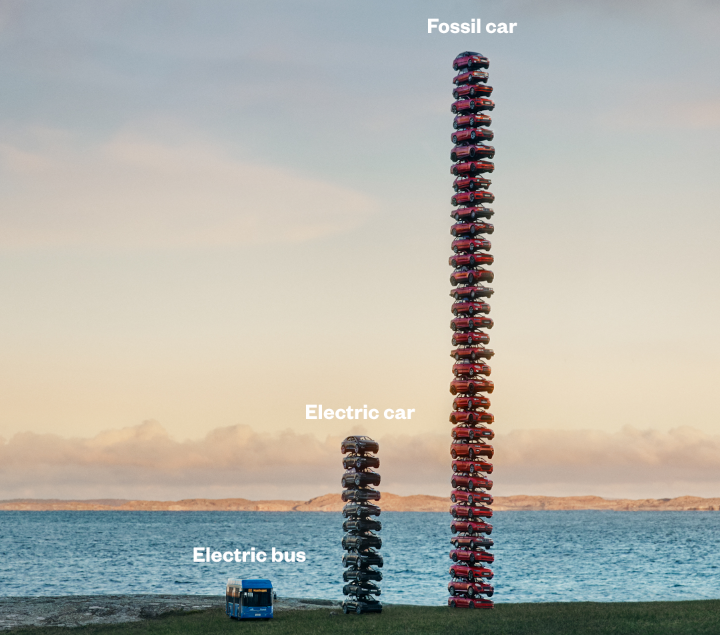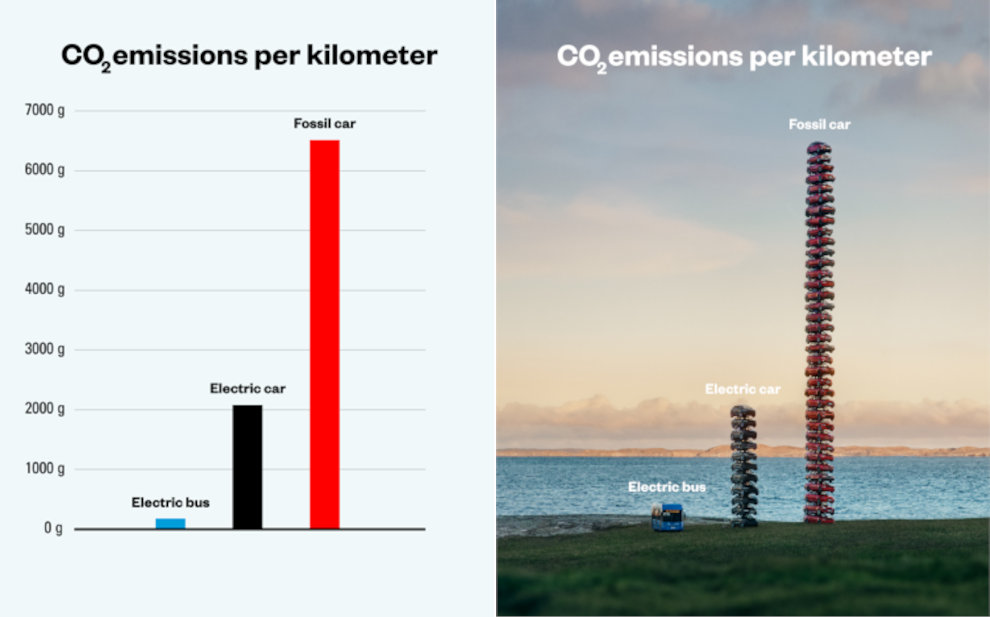
Piles of cars to show the environmental impact of public transport
A Swedish public transport operator is bringing statistics on CO2 emissions to life, by stacking up electric and fossil fuel cars in a campaign to promote the environmental benefit of collective transport.
What could be more convincing than a graph showing the carbon dioxide emission levels of each type of vehicle to demonstrate the environmental impact of switching from cars to public transport? What could be more common in the media and what could be more boring? This has led Västtrafik, the public transport operator of Västra Götaland, Sweden, to think up a different way of viewing the statistics with the agency Forsman & Bodenfors, that is more impactful and more tangible. Its campaign ad, launched in early 2023, gradually reveals a bus, then a stack of cars and then a second, even higher, stack of cars.
The three original bar charts bring to life the Swedish Environmental Research Institute’s figures on total carbon dioxide emissions per kilometre for the transport of 50 people. The statistics are based on the entire life-cycle of the vehicle, including manufacture and operation, and on the average of 1.4 people per car in Sweden. “If 50 people travel in an electric bus, the emissions will be 11 times lower than if they travel in an electric car – and 36 times lower than in a fossil fuel car”, the operator explained.

The campaign, which is being rolled out in print and in digital form in Västtrafik stores, as well as on Instagram, Facebook, Snapchat and TikTok, links to a page of statistics including a “climate calculator” for users to see their CO2 emissions based on their vehicle and the number of passengers.
“We wanted to make the statistics available to more people, because if we want to achieve climate goals, we have to share resources,” explained Västtrafik CEO, Lars Backman. *“We need to travel more together – it’s simply not enough to replace millions of fossil fuel cars with millions of electric cars.” *



